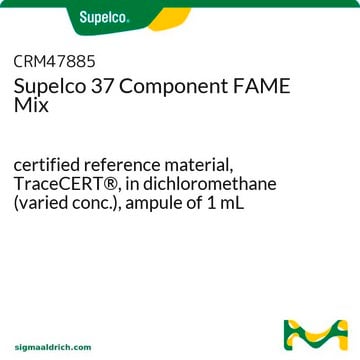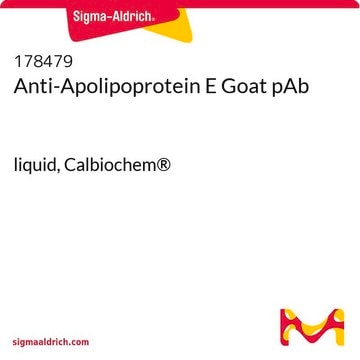A5968
Anti-AP-1 antibody produced in rabbit
affinity isolated antibody, buffered aqueous solution
Sinónimos:
Ap-1 Antibody, Ap1 Antibody, Ap1 Antibody - Anti-AP-1 antibody produced in rabbit, Anti-c-Jun
About This Item
Productos recomendados
origen biológico
rabbit
Nivel de calidad
conjugado
unconjugated
forma del anticuerpo
affinity isolated antibody
tipo de anticuerpo
primary antibodies
clon
polyclonal
Formulario
buffered aqueous solution
mol peso
antigen 39 kDa
reactividad de especies
human
técnicas
immunohistochemistry (formalin-fixed, paraffin-embedded sections): 1:200 using formalin-fixed, paraffin-embedded sections of human colon carcinoma
microarray: suitable
western blot: 1:200 using HeLa nuclear extract
Nº de acceso UniProt
Condiciones de envío
dry ice
temp. de almacenamiento
−20°C
modificación del objetivo postraduccional
unmodified
Información sobre el gen
human ... JUN(3725)
Descripción general
Anti-AP-1/c-Jun recognizes an epitope located on the c-Jun DNA binding domain. This epitope is highly conserved in c-Jun, Jun B and Jun D proteins of chicken, mouse, rat, and human. By immunoblotting, the antibody reacts specifically with AP-1/c-Jun (a single band or occasionally a doublet at 39kDa region). Additional bands of lower molecular weight may be observed. Staining of AP-1/c-Jun band(s) is inhibited by the AP-1/c-Jun immunizing peptide (amino acid residues 246-263).
Inmunógeno
Aplicación
Acciones bioquímicas o fisiológicas
Forma física
Cláusula de descargo de responsabilidad
¿No encuentra el producto adecuado?
Pruebe nuestro Herramienta de selección de productos.
Opcional
Código de clase de almacenamiento
10 - Combustible liquids
Clase de riesgo para el agua (WGK)
WGK 3
Punto de inflamabilidad (°F)
Not applicable
Punto de inflamabilidad (°C)
Not applicable
Elija entre una de las versiones más recientes:
Certificados de análisis (COA)
¿No ve la versión correcta?
Si necesita una versión concreta, puede buscar un certificado específico por el número de lote.
¿Ya tiene este producto?
Encuentre la documentación para los productos que ha comprado recientemente en la Biblioteca de documentos.
Active Filters
Nuestro equipo de científicos tiene experiencia en todas las áreas de investigación: Ciencias de la vida, Ciencia de los materiales, Síntesis química, Cromatografía, Analítica y muchas otras.
Póngase en contacto con el Servicio técnico








